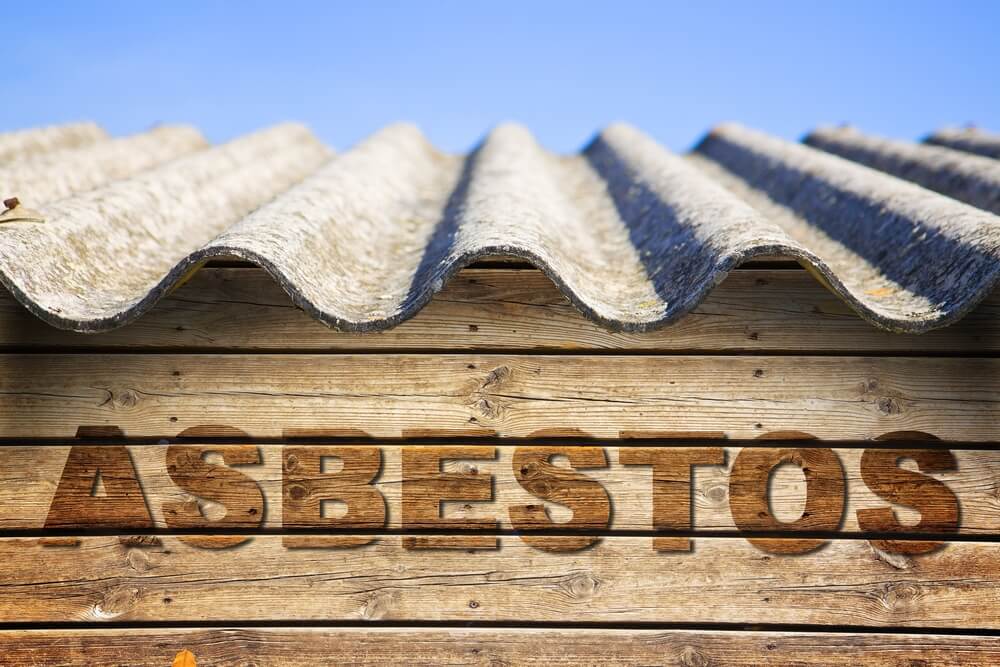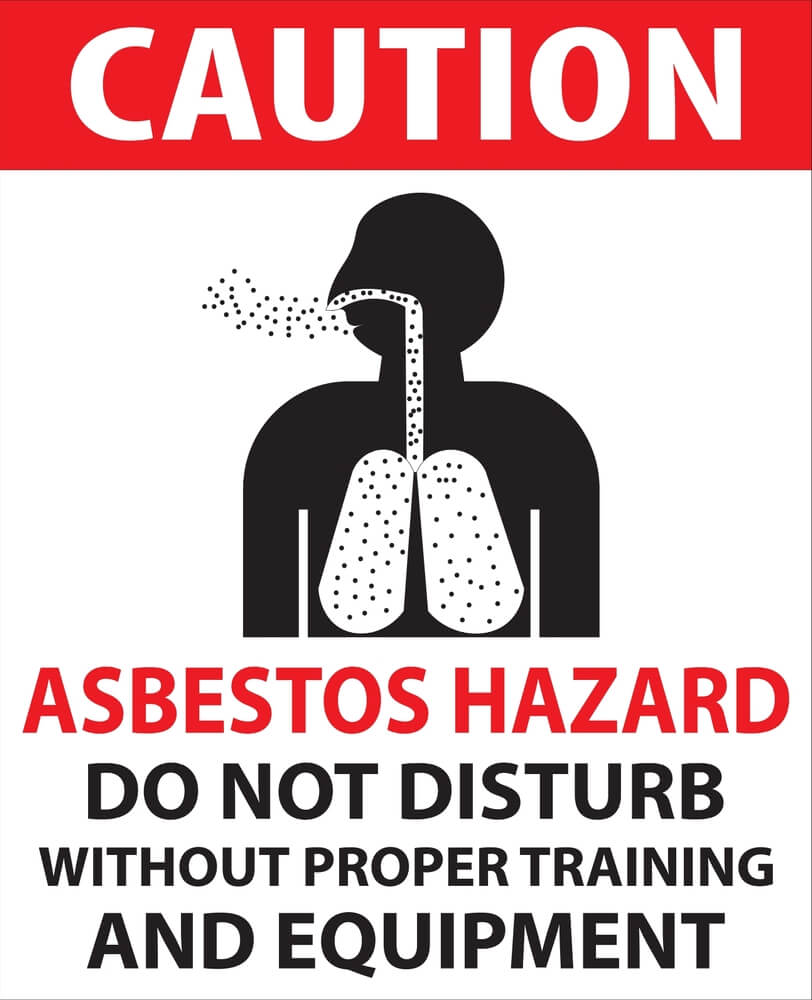

In the naked eye, asbestos looks like any other harmless building material. However, it is one of the most dangerous natural minerals that can cause life-threatening illnesses. Therefore, it is important to enhance our knowledge of asbestos. Understanding different types of asbestos is crucial for recognising the risks and implementing safety measures. Our blog will help you learn about the different types of asbestos. In addition, it will discuss their use and associated health risks to provide an overall understanding. So, stay with us till the end to keep yourself and your loved ones safe.
Table of Contents
What is Asbestos?
Asbestos is a fibrous silicate mineral. This naturally occurring mineral is strong, and flexible. And it has high resistance to heat and chemicals. This material is also an excellent electrical and thermal insulator. Due to such characteristics, asbestos was widely used in buildings. Roofs, flooring, walls, pipe insulation, home appliances, etc. are examples of asbestos use. However, since 1999, asbestos has been banned in the UK due to its serious health implications.
What are the Six Types of Asbestos?
There are 6 main categories of asbestos that are commonly found. Here is a brief explanation of each of these types. All of these asbestoses are dangerous for the human body and should be prevented from getting exposed.
- Actinolite
- Amosite
- Anthophyllite
- Chrysotile
- Crocidolite
- Tremolite

Actinolite
Actinolite is fibrous asbestos with elongated crystals. The colour of actinolite can range from dark green to grey. It can also be silky or shiny. The origin of this asbestos is metamorphic rocks that are rich in magnesium. Actinolite is usually found in building materials like drywall, cement sheets, plasters, and compounds used for wall joints. In addition, it is widely used for insulation materials. The fibres of Actinolite used in insulation can pierce the tissue linings of the lungs and cause lung cancer.
Amosite
Amosite is a brown-coloured asbestos that contains straight fibres. This mineral is high in magnesium and iron. This type of asbestos is used in cement products, fireproofing materials, electrical insulation, roofing, insulation board, etc.
However, the use of amosite is significantly reduced around the world due to its high health risk. People can suffer from serious diseases like lung cancer, mesothelioma, and asbestosis from the exposure of amosite.
Anthophyllite
Anthophyllite is primarily composed of iron and magnesium. This asbestos colour can range from yellowish to brownish-grey, and its fibres are long, thin, and brittle.
Unlike other asbestos, anthophyllite was not widely used for commercial purposes. Additionally, this type of asbestos is relatively rarer than other forms of asbestos. However, it can be found in talc and vermiculite compounds.
Chrysotile
This is the most common type of asbestos and falls under the serpentine category. The fibres of chrysotile asbestos are white and have a curly shape. It has high heat-resistant chemical stability and insulation properties. Therefore, it was extensively used for various industrial applications.
Cement, brake linings, gaskets, roofing materials, insulation, textiles, and flooring are among the common uses of this asbestos. Like other asbestos, chrysotile also possesses serious health risks. When the fibres get trapped in your lungs, it can cause chronic lung disease, lung cancer, and mesothelioma.
Crocidolite
Crocidolite, also known as blue asbestos, is one of the most harmful kinds. The core compounds are magnesium, silicon, iron, and sodium. The fibres of this asbestos are straight, thin, and blue. These fibres are extremely fine and sharp. As a result, they can easily be inhaled and penetrate deep inside our lung tissue. These fibres can cause chronic inflammation and cell damage, along with severe diseases like lung cancer, asbestosis, and mesothelioma.
This asbestos was used for industrial and commercial applications for its exceptional heat resistance and tensile strength. For example, cement production, chemical and acid-resistant filters, paint and sealant production, etc.
Tremolite
Tremolite is composed mainly of calcium, magnesium, and silicon. The colour of this asbestos can be white, grey, green, or even translucent. This material is not used for any industrial or commercial applications. However, it can be found as a contaminant in other asbestos products or minerals like talc, chrysotile, and vermiculite. Like other asbestos, this is also harmful to our lungs and other organs.
Other Minerals That May Contain Asbestos
Asbestos fibres can be found mixed with other minerals. The reason behind this is that asbestos is found in the same geological areas as these minerals. When the minerals are mined, the nearby asbestos fibres can get mixed with the minerals. Talc and vermiculite are the two major minerals that may contain asbestos.
Talc
Talc is a natural mineral mainly composed of oxygen, magnesium, hydrogen, and silicon. It is soft and has a smooth texture. Talc is used in a wide range of products, such as chalk, paint, cosmetics, paper, plastics, etc. The most common use of talc is in talcum powder and baby powder. Unfortunately, this widely used product can contain asbestos fibres. The use of contaminated talc can be very dangerous for us.
Vermiculite
Vermiculite is another mineral that can contain asbestos. It is a phyllosilicate mineral that can expand significantly when heated and transform into lightweight, worm-like pieces. This mineral is used for gardening, construction, packing and insulation for household products. Like talc, vermiculite is harmless on its own. However, this mineral is found near asbestos deposits, which increases the risk of contamination.
Are all Types of Asbestos Dangerous?
There are two main groups of asbestos—amphibole and serpentine. Both of these groups are dangerous for us. However, the amphibole group of asbestos contains thin, brittle, and needle-like fibres. Therefore, these fibres penetrate our lungs more easily. This is why it is considered more dangerous compared to the serpentine group.
Even though all types of asbestos are dangerous, blue or crocidolite asbestos is the most dangerous one. The fine fibres of this asbestos pose a high risk of cell damage, cancer, mesothelioma, and asbestosis. Due to its serious threats, it was one of the first asbestos banned by the UK government.
What are the Asbestos Exposure-related Diseases?
Asbestos can bring deadly consequences for those who are exposed. The fibres of asbestos are very thin and sharp. Therefore, these fibres can pierce through our tissues, causing a range of health issues. However, the risk of developing serious asbestos-related disease depends on a few factors, such as the duration of the exposure, intensity, personal factors, etc. People who have been exposed to asbestos for a long time can develop diseases such as –
- Asbestosis
- Lung Cancer
- Mesothelioma
- Pleural Plaques
- Other Cancers

Asbestosis
Asbestosis is caused due to the inhalation of the fibres. These needle-like fibres affect the lung tissue, which disrupts lung functions. Due to asbestosis, one may suffer from shortness of breath, chest tightness, and even respiratory failure.
Lung Cancer
Lung cancer is one of the major consequences of asbestos exposure. Lung cancer can occur after 15 or more years of asbestos exposure. Persistent cough, chest pain, weight loss, etc. are some of the symptoms of lung cancer.
Mesothelioma
This is a rare and aggressive type of cancer that impacts the thin layer of tissue covering internal organs. People who have been exposed to asbestos for more than 20 years are prone to mesothelioma. The symptoms of this cancer include chest pain, abdominal swelling, difficulty breathing, and weight loss.
Pleural Plaques
The thickening of the lining of the lungs is called pleural plaques. Due to this disease, the lining of the lungs thickens and squeezes the lungs. As a result, one may feel chest pain, discomfort, and shortness of breath.
Other Cancers
Along with lung cancer and mesothelioma, there are other cancers that can be caused by asbestos exposure. For example, ovarian cancer and laryngeal cancer.
Who is at Risk of Asbestos Exposure?
The people who are at high risk of asbestos exposure include:
- Construction and demolition workers
- Plumbers
- Asbestos Remover
- Electricians
- Painters
- Roofers
- Firefighter
- Industrial Workers
- Maintenance Workers
- Residents of Older Buildings

This is not a conclusive list since anyone who comes in contact with or has been exposed to Asbestos-containing environment is at risk, regardless of who they are, how old they are, or what they do.
How can You be Exposed to Asbestos?
Asbestos exposure happens when the fine fibres of asbestos go inside our body when we’re exposed to them. There are two main ways asbestos can enter our body,
- Inhalation
- Ingestion
Inhaling
The most common way asbestos enters our bodies is through inhalation. When asbestos-containing materials are disturbed or damaged, they release tiny airborne fibres. These fibres enter the lungs and are pulled deep inside the lung tissue. Cement, insulation, paint, drywall, etc. are the common sources that release asbestos particles into the air.
Ingestion
Along with inhaling, sometimes asbestos fibres can get swallowed. Asbestos can be ingested by consuming asbestos-contaminated water and food. This is mainly common in areas where asbestos is mined or processed.
However, the World Health Organisation (WHO) has stated that there is no evidence the ingestion of asbestos fibres is hazardous to health.
How to Identify Asbestos?
Before the ban in 1985, the use of asbestos was widespread. Back then, most of the buildings had asbestos-containing materials. So, many of these may still have asbestos. In these buildings, asbestos was used in wall paint, insulation, drywall, roofs, and many other parts. As they are mixed with other materials, it is difficult to identify them. So, here are some things you can do to check if your home contains this deadly material.
Find the Age of the Building
If you are living in an old building, you should check its establishment date. The buildings built before 1980 will most probably contain asbestos materials. So, collect samples from different areas of the building and send them to a certified asbestos testing lab. This way, you can be 100% sure if your home contains asbestos or not.
Visual Inspection
There are some visual indicators that can be signs of asbestos. Here are some signs to look for –
- If your pipe insulation is white, grey, or silver and looks like corrugated cardboard, it may be asbestos.
- Popcorn ceilings or textured coating on ceilings
- Older joint compounds or drywall
Professional Inspection
A foolproof way to find out if your home has asbestos or not is by calling the professionals. You can appoint licensed professionals to conduct an inspection of your home. If they find anything, let them take care of the issue.
To learn more about this, you may check out this Asbestos Awareness Online Course.

What to Do If You Find Asbestos in Your Home?
The steps you should take after identifying asbestos depend on its condition. Asbestos releases fibres in the air when it’s disturbed or damaged. So, if you find asbestos-containing materials that are intact, then it’s better to leave it like that. However, make sure the object or area containing asbestos is protected from any kind of damage.
If you need to repair things like pipe insulation or heating, you must cover the area. It is important to enclose to prevent the fibres from getting released into the air. However, if the asbestos-containing material is too damaged or the house needs renovation, you must call for professional help. There are licensed professionals who are trained to handle asbestos materials. You should seek their help and avoid trying to remove asbestos by yourself.
What are the Asbestos-related Regulations in the UK?
The UK government has taken extensive measures to control asbestos. Back in 1985, the initial banning of asbestos was placed. Back then, only the use and import of crocidolite (Blue) and amosite (Brown) asbestos were banned. In 1999, the government banned all kinds of asbestos through The Asbestos (Prohibitions) (Amendment) Regulations 1999. According to this legislation, all kinds of use, supply, and import of asbestos materials are banned in the UK.
There were no new asbestos uses. However, most of the older buildings still contained asbestos. In order to avoid exposure from the existing asbestos-contained materials, the government introduced Control of Asbestos at Work Regulations in 2002. According to this regulation, anyone working with asbestos insulation products must have a licence. In addition, a maximum exposure limit was set.
In 2006, the 2002 regulations were replaced by the Control of Asbestos Regulations Act. In this law, all the exciting laws were complied together, and laws were implemented to prevent the use and import of any asbestos-containing materials. Furthermore, a great deal of emphasis was on training the employees who would get exposed to asbestos. In 2012, The Control of Asbestos Regulations was introduced. However, not many new changes were made in this new framework.
Final Thoughts
Asbestos is a notorious hazard and requires proper protection. Learning about the different types of asbestos will allow you to recognise them and raise awareness. In addition, you will be able to take proper handling and control measures. Being informed about asbestos can also aid in making informed decisions during home renovations, purchases, or inspections.
FAQ
Yes, all types of asbestos are dangerous for our health. Some of them can have more harmful impacts than others, such as blue asbestos or Crocidolite.
All types of asbestos are banned in the United Kingdom.
Chrysotile is the most common type of asbestos found in homes and buildings.
If you find asbestos in your home, avoid disrupting it. Seek professional help for the maintenance and replacement of the asbestos.
Chrysotile is also known as white asbestos.
The most dangerous type of asbestos is Crocidolite or blue asbestos.






